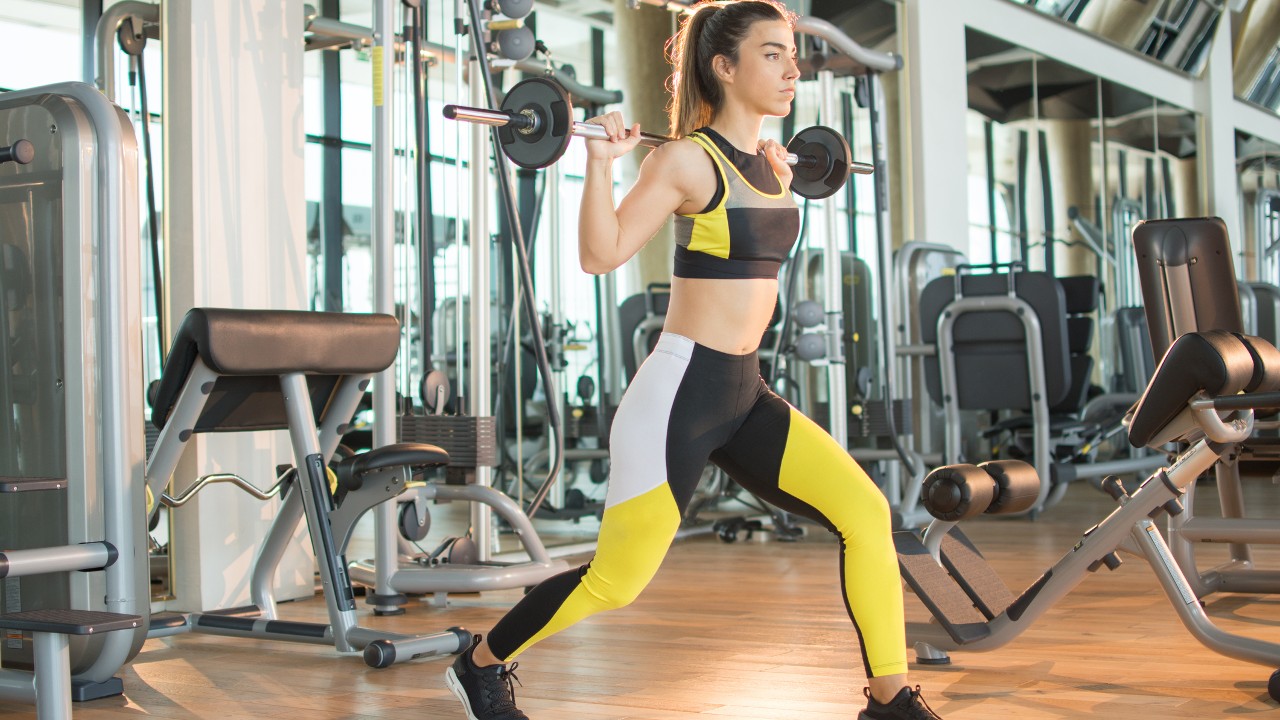How To Do The Split Squat
Swap out standard squats for this exercise and add a test for your abs

Compound exercises are great at sparking new muscle growth. Targeting more than one major muscle group in one move not only provides your muscles’ fibres with the stimulus to increase in size, but also sets off processes that boost your recovery and results.
It’s hard to argue with anyone who says the best compound leg exercise is the squat, which works your quads, glutes and hamstrings in one fell swoop. But that’s not to say there aren’t highly effective alternatives, and one of those is the split squat.
The split squat stimulates the same leg muscles as the squat, but the single-leg foundation places a significant amount of tension on the abdominal muscles with the added benefit of boosting your overall functional strength.
Split Squat Benefits
The split squat targets the same muscles as the unweighted squat, which is pretty much every muscle in the lower body, with the glutes and quads doing most of the work. However, by adopting a split stance you place the focus on one side of the body at a time. This means you can identify and then work on any strength imbalances in your body, so that when you return to standard squats both sides of the body are pulling their weight, so to speak.
Another benefit of the staggered stance is that it creates more tension in the abs, which you should keep engaged throughout the movement to ensure proper form and improve your core strength.
How To Do The Split Squat
The unweighted squat, or air squat, is an exercise that ticks a lot of boxes. It’s one of the best bodyweight exercises you can do, suitable for all levels of fitness, increases your functional strength and targets multiple muscle groups in the lower body as well as working your core.
It’s pretty much perfect as leg exercises go, but once you’ve figured out how to do a squat with perfect form take things up a notch. For one thing it’s worth increasing the challenge involved with progressions like squat jumps and the goblet squat, or even the barbell back squat. For another it’s important to mix in some unilateral work using the split squat, which lets you work one side of the body at a time.
Sign up for workout ideas, training advice, reviews of the latest gear and more.
Barbell Split Squat Form Tips
- Keep your knees in line with your toes.
- Initiate the movement with the back leg rather than front. This reduces the risk of injury on your front knee.
Split Squat Variations
It’s good to get to grips with the split squat by doing it without any resistance at first, but once you’re sure you’ve nailed the form you can increase the difficulty by adding weight. You can hold a dumbbell in each hand or a kettlebell against your chest, but the most common progression is the barbell split squat.
Barbell split squat

Engage your upper traps as you would with a barbell squat and position the bar across this area. Step back out of the rack and then take a long step forwards, raising your back heel so your foot is supported by the toes. Retract your shoulders, and keep your chest and chin elevated. Lower slowly, flexing at the knee on the front leg, until your back knee is almost touching the floor. Keeping your core engaged, rise to the start position. Make sure you initiate the movement with the back leg rather than the front. This reduces the risk of injury to your front knee.

Joe Warner is a highly experienced journalist and editor who began working in fitness media in 2008. He has featured on the cover of Men’s Fitness UK twice and has co-authored Amazon best-sellers including 12-Week Body Plan. He was the editor of Men’s Fitness UK magazine between 2016 and 2019, when that title shared a website with Coach.
- Nick Harris-FrySenior writer
